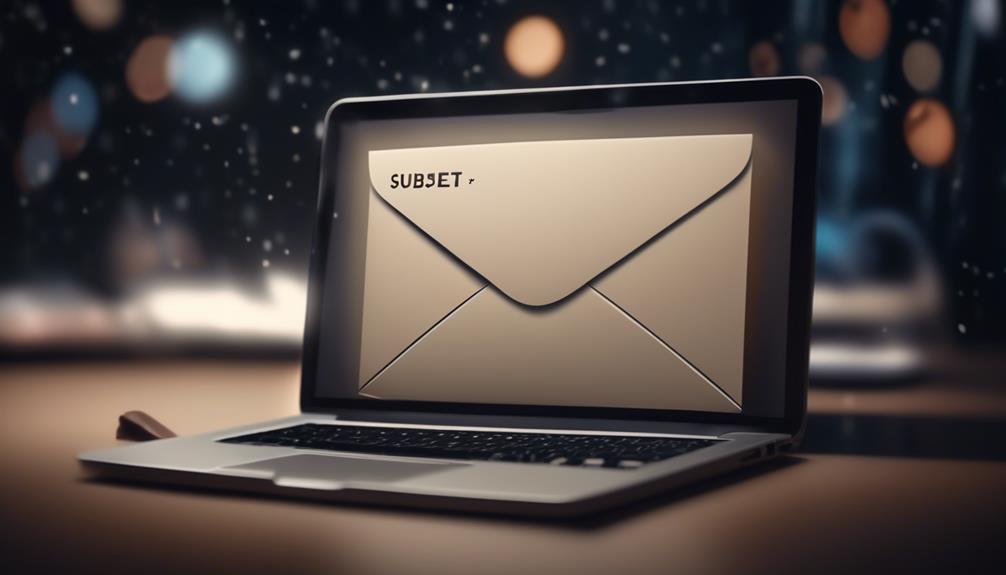Have you ever wondered about the most effective methods to manually warm up your email? It is a crucial step for establishing a strong sending reputation and maximizing delivery rates, but where do you begin?
By following a strategic approach and gradually increasing your email volume, you can pave the way for successful email campaigns. But what specific steps should you take to ensure your emails are well-received and engage recipients effectively?
Join us as we explore the essential techniques and best practices for manual email warm-up that can make a significant impact on your email marketing efforts.
Key Takeaways
- Verify domain and implement authentication measures for credibility and best practices.
- Gradually increase individual email volume, personalize messages, and space out timings.
- Promptly reply and contribute valuable information in conversation threads with thoughtful messages.
- Subscribe to industry newsletters, engage with content, and monitor frequency and content balance.
Authenticate Your Account
To ensure proper email deliverability and establish credibility, authenticating our account is an essential step in the email warm-up process. When setting up new email accounts or addresses for the purpose of sending cold emails, it's crucial to authenticate our identity to the email service provider. This authentication process involves verifying our domain, configuring SPF and DKIM records, and implementing a DMARC policy.
By completing these steps, we not only confirm our ownership of the email address but also demonstrate our commitment to following best practices in email communication.
Authenticating our account plays a significant role in enhancing our reputation as a sender and increasing the likelihood of our emails reaching the recipient's inbox instead of being flagged as spam. It's a proactive measure that helps us build trust with email service providers and safeguards our sender reputation.
Consulting our email service provider's documentation or support team for guidance on authenticating our account can provide specific instructions tailored to our needs and ensure a smooth warm-up process.
Send Individual Emails

When initiating the warm-up process, it's essential to gradually increase the volume of individual emails sent daily to enhance sender reputation and engagement. Sending individual emails allows for a more personalized approach, increasing the likelihood of reaching the inbox and achieving a higher delivery rate.
By creating personalized emails, incorporating the recipient's name and company details, you can establish a connection that leads to higher open rates. It's crucial to add an email signature to your messages to appear more professional and credible.
To simulate regular email activities, consider replying to emails from other accounts during this warm-up phase. Maintaining a custom domain also contributes to a positive sender reputation. Remember to space out the timing between each email to prevent any negative impact on your domain reputation.
Utilizing automated tools can assist in managing the warm-up process effectively, ensuring a smooth transition towards improved email deliverability.
Maintain Conversation Threads
Maintaining conversation threads involves promptly responding to emails from other accounts to sustain active and engaging communication. By replying back in a timely manner and contributing valuable information to the conversation, you can establish yourself as a positive sender and build a reputable presence in the digital realm. It is crucial to interact with your inbox regularly, ensuring that your responses are thoughtful and tailored to the ongoing discussion. Utilizing a digital signature can add a professional touch to your messages, further enhancing your communication style.
| Key Points | Description | Importance |
|---|---|---|
| Reply promptly | Maintain active conversation threads by responding promptly to emails from other accounts. | Ensures continuity in discussions |
| Engage meaningfully | Contribute valuable information and engage in meaningful discussions to keep the conversation flowing. | Enhances the quality of interactions |
| Avoid generic responses | Steer clear of generic or one-word replies, and instead, provide thoughtful messages to enrich the conversation. | Demonstrates interest and respect |
| Track conversation history | Keep track of past discussions to reference and maintain continuity in the conversation threads. | Helps in building rapport over time |
Subscribe to Newsletters

Regularly subscribing to newsletters is a strategic approach to staying informed and connected within your industry. When manually warming up email accounts, subscribing to newsletters can help mimic natural mailbox activity, increasing email deliverability and reducing the chances of being flagged by spam filters. By engaging with newsletter content, you generate legitimate email volume, signaling to email providers that your account is active and reputable.
To optimize this strategy, ensure that the newsletters you subscribe to include an unsubscribe link. This not only aligns with best practices but also allows you to manage your subscriptions efficiently. Select newsletters that provide valuable insights and updates relevant to your industry to enhance engagement and credibility.
Monitoring the frequency and content of newsletters can also contribute to a more balanced warm-up process. By gradually increasing your interaction with newsletters, you simulate organic email behavior and establish a positive sender reputation. Subscribing to newsletters is a practical step in manually warming up email accounts, fostering meaningful connections and improving email deliverability.
Set Up a Personalized Test Campaign
To initiate the process of setting up a personalized test campaign, we recommend implementing a strategic approach to gradually increasing email volume while engaging recipients in personalized conversations.
When warming up email accounts, it's crucial to consider the impact on domain reputation. Personalizing emails and simulating regular mailbox activity can help build trust with new recipients. Ensure proper authentication of the email account with SPF, DKIM, DMARC, and a custom domain to enhance deliverability and avoid being flagged as spam.
To set up a personalized test campaign effectively, avoid sending the same generic messages repeatedly and maintain a suitable time interval between emails to prevent any negative repercussions. Consider utilizing tools like the Email Warm-Up tool to manage the warm-up process efficiently and mimic authentic user interactions.
Frequently Asked Questions
How Do I Manually Warm up My Domain?
We gradually increase email sending volume and activity to establish domain credibility and improve deliverability.
Personalizing emails and engaging in conversations with recipients simulate regular mailbox activity.
Authenticating our email account with SPF, DKIM, DMARC, and a custom domain enhances deliverability.
We maintain time gaps between consecutive emails to avoid damaging our domain's reputation.
Using automated tools or services ensures a consistent warm-up process, saving time.
How Do I Warm up My Email Server?
To warm up an email server effectively, we focus on gradually increasing sending volume, personalizing emails for higher engagement, and maintaining authentication protocols like SPF, DKIM, and DMARC.
Simulating regular mailbox activity by replying to emails from other accounts is crucial.
Consistency in sending schedule is key, avoiding sudden spikes in email volume.
These strategies ensure a smooth warm-up process for optimal deliverability and reputation building.
Do I Need to Warm up an Email Address?
We need to warm up an email address to establish a good reputation and avoid being flagged as spam. Gradually increasing the number of emails sent each day, personalizing content, and engaging recipients are crucial steps.
By monitoring metrics and adjusting sending volume, we can maintain credibility. Quality content and consistent mailing habits also play a significant role.
It's essential to build trust gradually to ensure successful email deliverability.
How Do I Warm up an Old Email List?
We might think that warming up an old email list involves simply blasting out messages, but that's the last thing you should do. Instead, we should segment the list, engage with subscribers through personalized content, and gradually increase our sending volume.
What Are the Benefits of Using Apollo Email Warm up Instead of Manually Warming up Email?
The Apollo email warm up process offers numerous benefits compared to manually warming up email. It helps improve email deliverability, avoids getting flagged as spam, and saves time and effort. With Apollo’s automated warm up process, users can streamline their email outreach and ensure higher success rates.
Conclusion
In conclusion, warming up an email is like tending to a delicate flame. Start small and nurture it with personalized engagement. Gradually increase the intensity. By following best practices and maintaining a strategic approach, you can ensure that your email reputation burns bright and reaches its intended recipients effectively.
Remember, patience and consistency are key to successfully warming up your email campaigns.










